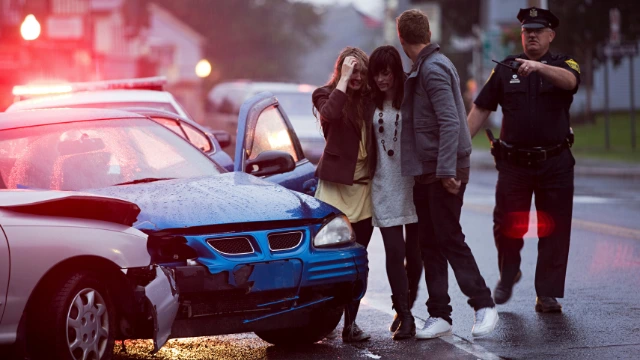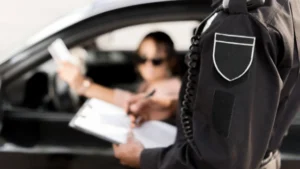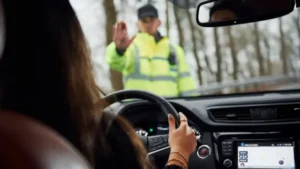

The Importance of Traffic Accident Investigation
Imagine you’re driving through an intersection when suddenly, another vehicle runs a red light and crashes into your car. In the chaos that follows, it’s unclear who is at fault. In situations like these, traffic accident investigations play a crucial role in determining responsibility, legal consequences, and insurance claims.
Every year, millions of traffic accidents occur, and properly investigating these incidents is essential for accurate legal outcomes. Whether you’re involved in a minor fender bender or a major collision, understanding how accidents are investigated can help you protect your rights.
Accident Reconstruction: How Experts Piece Together the Truth
A key component of any traffic accident investigation is accident reconstruction. Investigators, often including police officers and forensic specialists, use scientific methods to analyze the crash and determine what happened in the moments leading up to it.
How Accident Reconstruction Works
Accident reconstruction specialists rely on a combination of technology, physics, and eyewitness testimony to recreate the event. Their goal is to establish:
- Vehicle speed before impact
- Braking patterns and reaction time
- Point of impact and vehicle movement
- Weather and road conditions at the time of the crash
- Mechanical failures or human errors that contributed to the accident
The Role of Technology in Accident Reconstruction
Modern accident reconstruction relies heavily on digital tools, including:
- 3D Laser Scanners: Create precise diagrams of accident scenes.
- Black Box Data (EDRs): Many vehicles record speed, braking, and other details before a crash.
- Drones & Aerial Imaging: Provide a broader view of accident scenes to better understand impact angles.
For instance, if a crash occurs at an intersection, investigators may use surveillance footage, tire skid marks, and EDR data to determine if a driver was speeding or failed to brake in time. This evidence can be critical in court to prove or disprove liability.
Evidence Analysis: What Investigators Look For
Once an accident is reconstructed, investigators move to evidence analysis to determine fault. The type and quality of evidence gathered can significantly impact legal proceedings and insurance claims.
Types of Evidence Used in Accident Investigations
- Physical Evidence: Includes damaged vehicles, debris patterns, and road conditions.
- Eyewitness Testimony: Statements from drivers, passengers, and bystanders provide perspectives on what happened.
- Police Reports: Official accident reports document officer observations, citations, and preliminary fault assessments.
- Traffic Camera & Dashcam Footage: Visual evidence can prove speed violations, red-light running, or distracted driving.
- Toxicology Reports: If DUI is suspected, alcohol and drug tests play a major role in determining liability.
Investigators assess this evidence to determine if negligence played a role and whether criminal charges should be filed.
Sentencing Factors in Traffic Accidents
If an accident results in serious injury or death, the driver responsible may face criminal charges such as vehicular manslaughter, reckless driving, or DUI-related homicide. Courts consider several sentencing factors when determining penalties:
Key Factors That Impact Sentencing
- Severity of Injuries or Fatalities: Accidents resulting in serious injury or death carry harsher penalties.
- Driver’s Conduct: Reckless actions like speeding, distracted driving, or DUI can escalate charges.
- Prior Driving Record: A history of traffic violations increases the likelihood of severe punishment.
- Presence of Aggravating Factors: If children were in the car if the driver fled the scene, or if there was road rage involved, penalties increase.
- Intent vs. Negligence: Courts assess whether the driver was intentionally reckless or simply negligent.
For example, a driver involved in a fatal DUI crash may face prison time, while someone causing a minor accident due to a momentary distraction may only receive fines or license suspension.
Case Study: How Accident Reconstruction Helped Prove Innocence
Background
David, a 45-year-old delivery driver, was involved in a serious accident when another car ran a stop sign and crashed into his vehicle. The other driver claimed David was speeding and caused the crash. With no clear witnesses, David faced potential legal consequences and a lawsuit.
Investigation and Evidence Analysis
David’s attorney worked with an accident reconstruction specialist to prove his innocence. The team used:
- Black Box Data: This showed David was driving at a legal speed before impact.
- Tire Skid Analysis: Proved David had attempted to brake before the collision.
- Traffic Camera Footage: Clearly showed the other driver running a stop sign.
Outcome
The evidence proved David was not at fault, leading to the dismissal of charges and a successful counter-lawsuit for damages.
Final Thoughts
Traffic accident investigations are critical for determining fault, assessing legal responsibility, and ensuring fair compensation. If you are involved in an accident and facing legal challenges, consulting an experienced criminal defense or personal injury attorney can help protect your rights.
Frequently Asked Questions (FAQs)
- How long does a traffic accident investigation take? It depends on the severity of the accident. Minor accidents may be resolved in days, while major crashes requiring forensic analysis can take weeks or months.
- What should I do if I’m involved in an accident? Remain at the scene, call law enforcement, take photos of damages, and exchange contact and insurance information with the other driver.
- Can accident reconstruction prove who was at fault? Yes, reconstruction uses scientific methods and technology to establish fault based on physical evidence and vehicle data.
- Can I be charged with a crime after a traffic accident? If negligence, DUI, or reckless driving is involved, you may face criminal charges ranging from misdemeanors to felonies.
- Can I challenge a police report if I disagree with the findings? Yes, with legal representation, you can challenge errors in police reports, present new evidence, or request an independent accident reconstruction.



